Search Images
Browse Content (p. 1555)
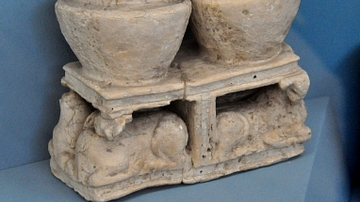
Image
Double Vessel from Shuruppak
A double vessel with a base of four bulls. From Shuruppak (modern-day Tell Fa'rah, Iraq), southern Mesopotamia. Early dynastic period, 2570-2342 BCE. (Istanbul Archaeological Museums/Ancient Orient Museum, Istanbul, Turkey).
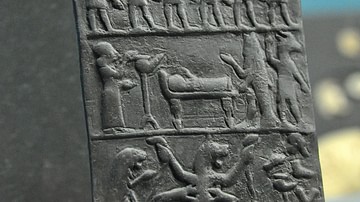
Image
Assyrian Amulet
This bronze plaque represents an amulet against bad spirits and diseases. From northern Mesopotamia (modern-day Iraq). Assyrian. Istanbul Archaeological Museums/Ancient Orient Museum, Istanbul, Turkey.
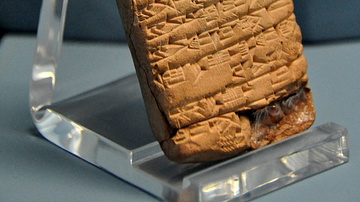
Image
Breaking an Engagement Tablet
This terracotta cuneiform tablet mentions a judicial decision on breaking an engagement. From Girsu (modern-day Tell Telloh, Dhi-Qar Governorate, Iraq), Southern Mesopotamia, Iraq. Neo-Sumerian period (Ur III), 2035 BCE. (Istanbul Archaeological...
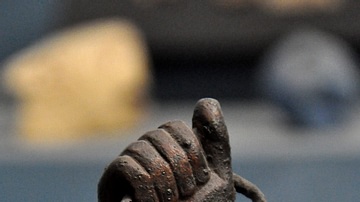
Image
Hand and Ring
This bronze hand holds a ring, a symbol of divinity. From northern Mesopotamia (modern-day Iraq). Assyrian. Istanbul Archaeological Museums/Ancient Orient Museum, Istanbul, Turkey.
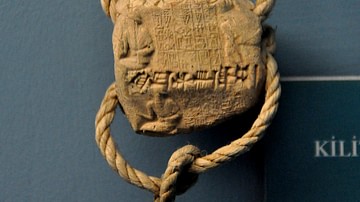
Image
Seal Lock
Terracotta seal lock from Lagash, southern Mesopotamia, modern-day Iraq. Neo-Sumerian period (Ur III), 2114-2004 BCE. (Istanbul Archeological Museums/Ancient Orient Museum, Istanbul, Turkey).
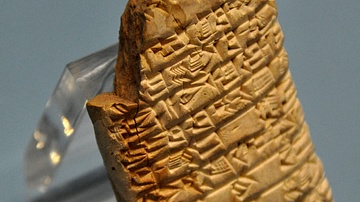
Image
Court Decision Tablet
This terracotta cuneiform tablet narrates a verdict about a murder. From Girsu (modern-day Tell Telloh, Dhi-Qar Governorate, Iraq), Southern Mesopotamia, Iraq. Neo-Sumerian period (Ur III), 2112-2004 BCE. (Istanbul Archaeological Museums/Ancient...
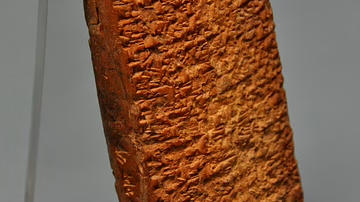
Image
Ludingirra Letter
This terracotta cuneiform tablet is a letter from Ludingirra to his mother. Nippur (modern Nuffar, Al-Qadisiyah Governorate, Iraq), southern Mesopotamia. Old-Babylonian period, 1700 BCE. (Istanbul Archeological Museums/Ancient Orient Museum...
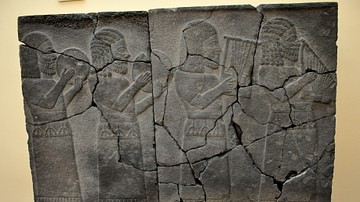
Image
Hittite Relief of Musicians
This basalt wall relief depicts four people playing on musical instruments. From Sam'al (modern-day Sinjerli, Gaziantep, Turkey). Late Hittite period, 8th century BCE. (Istanbul Archeological Museums/Ancient Orient Museum, Istanbul, Turkey...
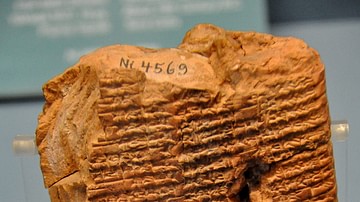
Image
Inanna Prefers the Farmer
This terracotta cuneiform tablet is about the myth of "Inanna prefers the farmer." In this myth, Enkimdu (the god of farming) and Dumuzi (the god of food and vegetation) tried to win the hand of the goddess Inanna. From Nippur (modern Nuffar...
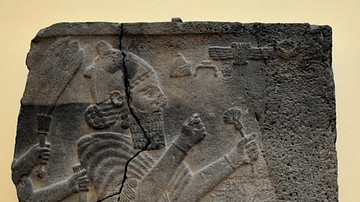
Image
Hittite King Barrekub
In this basalt wall relief, King Barrekub prays in front of divine symbols. The Hittite hieroglyphic inscriptions talk about the construction of a new palace. Sam'al (modern-day Sinjerli, Gaziantep, Turkey). Late Hittite period, 8th century...